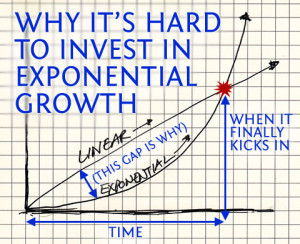Performance management is one of those topics that everyone loves to hate on, but I’ve found that if done right it can produce real value for your team (and everyone will still hate on it.) The key to the most successful performance management process I’ve seen involves the use of flywheels (positive feedback loops, virtuous cycles, etc.) The crux of any performance management system is the evaluation of both the “what” and the “how.”

The Impact Flywheel
The “what” summarizes the work that was completed in the review cycle. It should include a measure of the impact that work had on the company, team, or product. First, this starts as a simple summary of the work completed, but the focus should be on finding the most important items. You can allow the smaller items to fall away. Second, enumerating how beneficial the work was is a difficult, but very important part. There’s no need to list every single accomplishment in the performance review. Finally, grouping the accomplishments into key areas that align with your career rubrics is a crucial element. For instance, leadership, collaboration, or technical mastery. This creates the first flywheel of performance management, a focus on impact.
By focusing on how the work completed made the company better and rewarding individuals you reinforce a culture of company improvement. Improvements can be making the company faster, more valuable, more profitable, larger, whatever is valuable to your team. Every time you reward someone for making the company better you encourage the team to look for more ways to do it again. As an example: say an engineer on the team created a new feature now used by 90% of new customers. We should congratulate them for that work by noting it in their performance review and reward them appropriately.
The Growth Flywheel
Similarly, the “how” of performance management is also a critical component. “How” looks at the behaviors demonstrated by the individual in accomplishing the work. However, you still only need to hit the highlights. Don’t document every single behavior that was demonstrated in the performance review period. Highlighting those behaviors demonstrating next-level performance will keep the focus on the most impactful work. Note: measuring these is considerably more tricky as the impact from this work is often subjective. Capturing the clearest demonstrations of behaviors your company values will create the second flywheel.
This flywheel of performance management creates a positive feedback loop of individual growth. Individual growth that is rewarded (say with a compensation increase, a promotion, or why not both) encourages even more next-level growth. For example, you notice a more junior team member is starting to show leadership across the team. You should encourage this by recognizing and rewarding that behavior. This encourages them to take on more leadership in the future.
The Partnership Flywheel
The final flywheel is less about the process of documenting the performance. It’s about how the individual and their manager partner in making sure the performance review is representative of their work. I’ve found that doing performance reviews in a collaborative (the manager and the individual working together) and progressive (writing down the accomplishments and behaviors throughout the review period) manner makes the work required at the end of each cycle considerably less onerous. It also drives good conversations about performance and growth opportunities throughout the review cycle. By creating a partnership between managers and individuals in this way you can create an organization that values performance growth.
This is the third flywheel of performance management. Individuals see growth and are rewarded for it. Managers help individuals grow and are rewarded for it. The company, product, or team improves and morale improves. And the cycle repeats as the company and individuals grow together.




 You’ve got to name and claim the Impostor Syndrome feelings you’re having. By knowing what you’re dealing with, you can begin to explore the way out.
You’ve got to name and claim the Impostor Syndrome feelings you’re having. By knowing what you’re dealing with, you can begin to explore the way out.

 a Quality Assurance organization. Sometimes this has gone well, and others it has been less than effective, which will be the focus of this post. I talked about these in an
a Quality Assurance organization. Sometimes this has gone well, and others it has been less than effective, which will be the focus of this post. I talked about these in an  encouraging them to always learn from the mistake and to not repeat it. Each review period, quarterly when I first encountered this mentality, we would look at the three things you could have done better. Those mistakes or opportunities were a chance to place a mental speedbump on that memory so that going forward you’ll always remember the mistake and the connected ways you can handle it better going forwards.
encouraging them to always learn from the mistake and to not repeat it. Each review period, quarterly when I first encountered this mentality, we would look at the three things you could have done better. Those mistakes or opportunities were a chance to place a mental speedbump on that memory so that going forward you’ll always remember the mistake and the connected ways you can handle it better going forwards. Metrics will rule the world
Metrics will rule the world